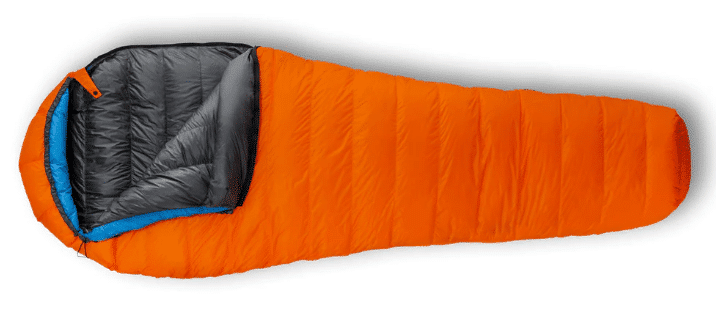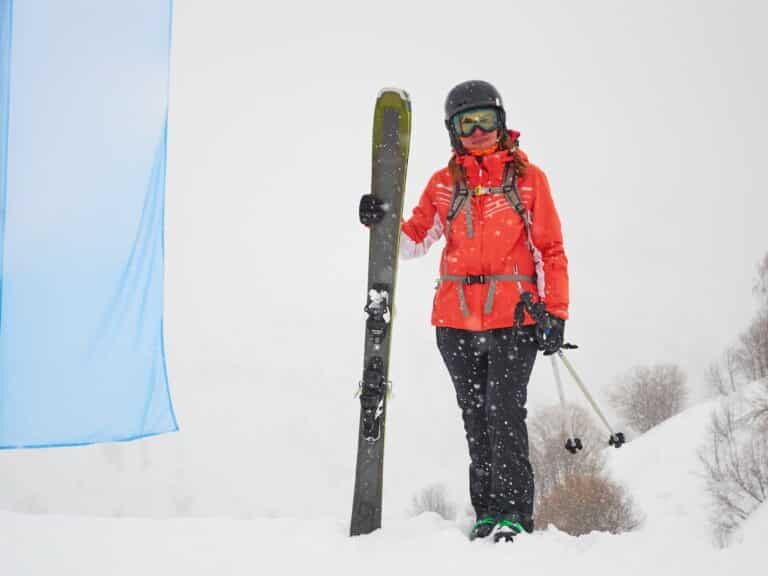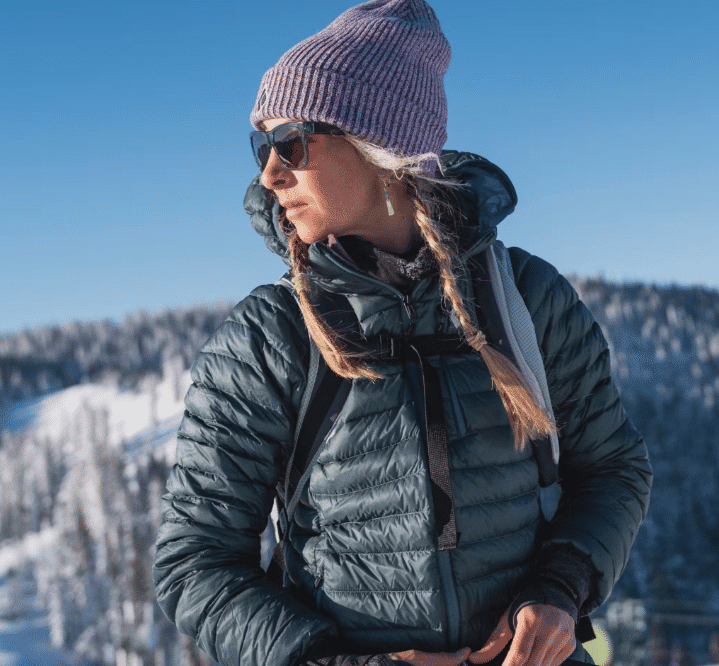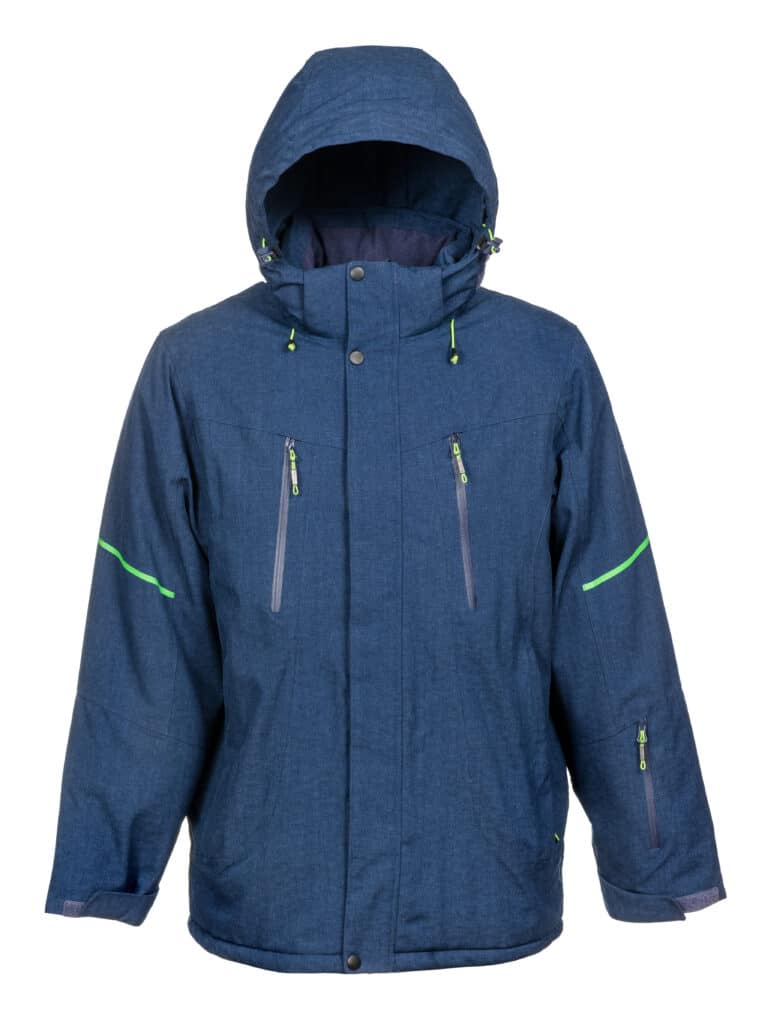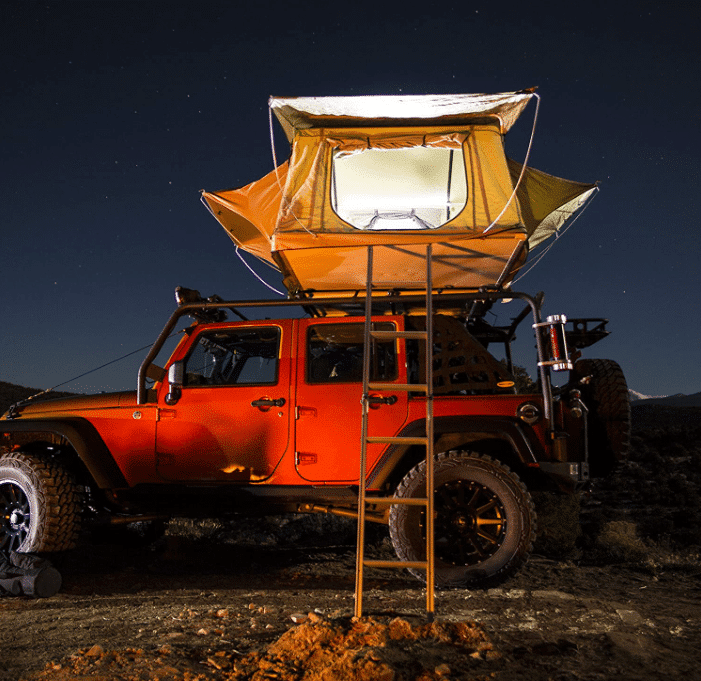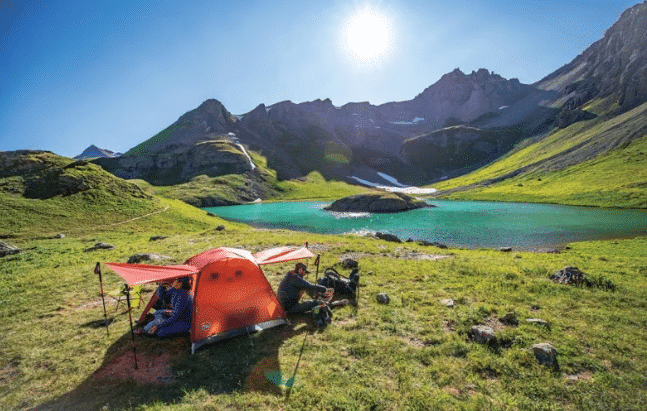Top 10 Best Backpacking Sleeping Bags of 2023
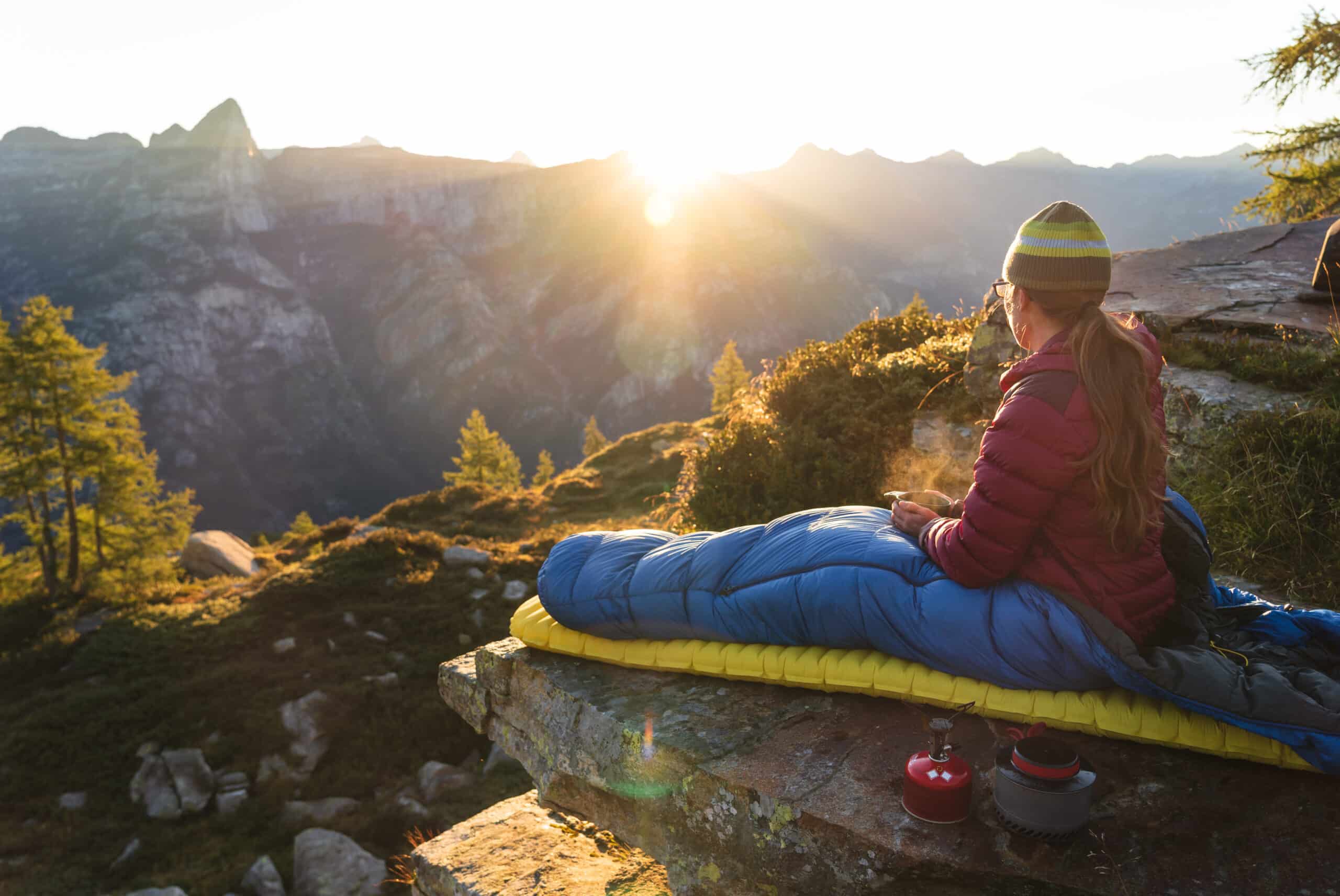
Our content may include affiliate links, through which we earn a small commission on purchases. Want to learn more about us? Read here.
Imagine finally finding the perfect backpacking sleeping bag that suits your needs, preferences, and budget. No more shivering in your tent, tossing and turning because of discomfort, or lugging around a heavy, cumbersome bag. This comprehensive guide covers everything you need to know about sleeping bags, including temperature ratings, insulation, sizing, and fit.
We’ll also reveal our top picks for backpacking sleeping bags of 2023, catering to various categories such as best overall, ultralight, budget, side sleeper, and women’s specific options.
Short Summary
Find the perfect backpacking sleeping bag for your needs & budget.
Consider temperature ratings, mummy vs. rectangular shape, size & fit when choosing a sleeping bag.
Get extra comfort with accessories like liners and pillows. Maintain it with proper care instructions!
Comprehensive Guide to Backpacking Sleeping Bags
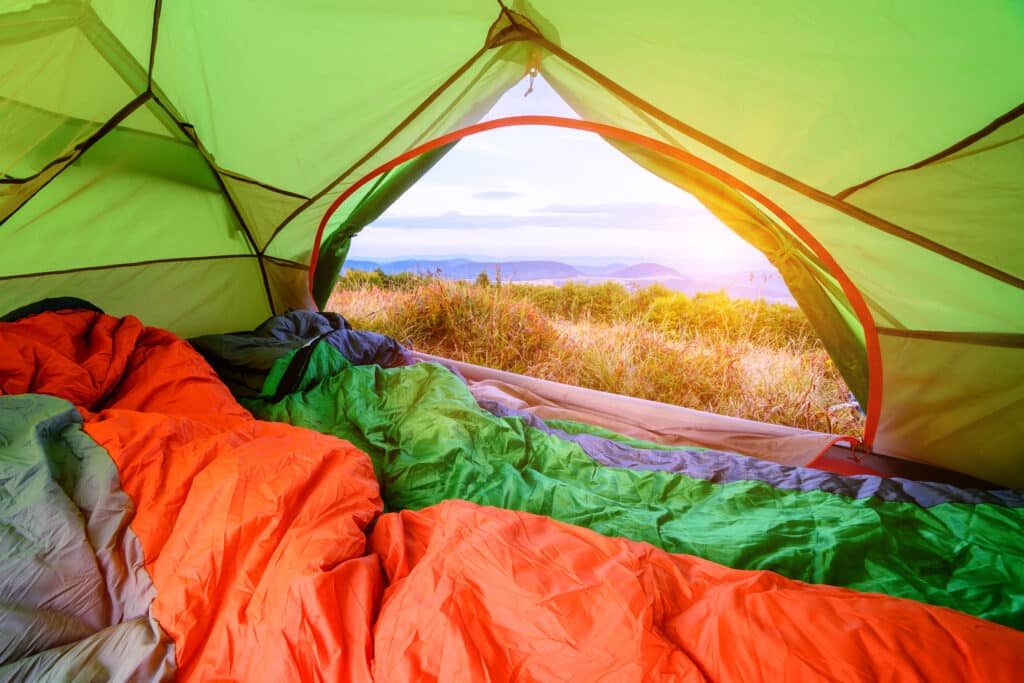
A good night’s sleep is essential when you’re out in the wilderness, and the right sleeping bag can make all the difference. When choosing a backpacking sleeping bag, it’s important to consider factors such as size, warmth, weight, materials, and cost.
You’ll want a bag that provides adequate insulation, suits your body shape, and is easy to carry on your adventures.
Temperature Ratings and Insulation
When it comes to selecting a sleeping bag, temperature ratings play a crucial role in ensuring a comfortable night’s sleep. Based on EN/ISO standards, sleeping bags are rated according to the lowest temperature at which they’ll keep you warm.

It’s essential to choose a bag with the appropriate temperature rating for your specific needs, taking into account factors such as your personal warmth preferences and the climate of your destination.
Insulation is another key factor in determining the warmth of a sleeping bag. There are two main types of insulation: down and synthetic. Down insulation, typically made from goose or duck feathers, offers a superior warmth-to-weight ratio and is highly compressible, making it an excellent choice for backpackers seeking lightweight and compact bags.
However, down insulation tends to lose its insulating properties when wet, making a synthetic sleeping bag a better option for damp environments. Synthetic insulation, made from polyester fibers, provides warmth even when wet and is generally more affordable than down, but it is also bulkier and heavier.
Understanding the different types of insulation and their respective advantages and disadvantages will help you make an informed decision when selecting the perfect sleeping bag for your needs. Remember, the insulation type, sleeping pad, testing method, and personal experience all play a role in your sleeping bag’s overall warmth and comfort.
Mummy vs. Rectangular Bags
Sleeping bags come in various shapes, with mummy and rectangular designs being the most common. Mummy-shaped sleeping bags are more tapered and form-fitting, designed to provide maximum warmth with minimal weight and pack size. They are ideal for backpackers who prioritize efficiency and warmth in their gear.
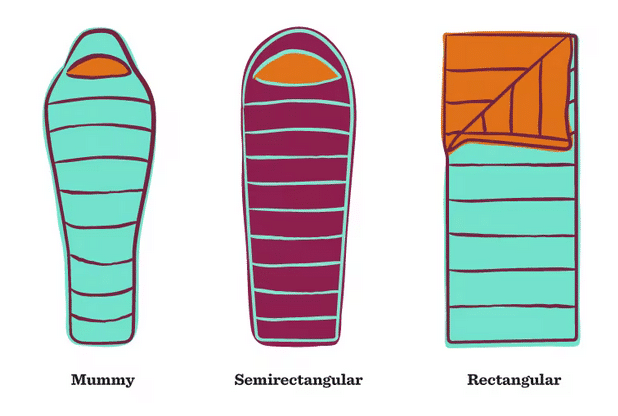
On the other hand, rectangular sleeping bags offer more room to move around, making them more comfortable for those who tend to toss and turn during the night. However, they are generally bulkier and heavier than mummy bags, making them better suited for car camping or situations where weight and pack size are not critical concerns.
Choosing the right shape for your sleeping bag ultimately depends on your preferences and intended use. A mummy bag will provide greater warmth and packability, making it an excellent choice for backpacking and colder environments. In contrast, a rectangular bag offers more space and comfort, making it a better option for car rooftop camping and warmer climates.
Sizing and Fit
Finding a sleeping bag that fits you well is crucial for both comfort and warmth. If a sleeping bag is too tight, the down insulation may become compressed, reducing insulation properties and leaving you colder at night.
On the other hand, a bag that is too large may leave you with excess space, making it harder to retain warmth. To find the perfect fit, it’s a good idea to try out different brands and sizes at a store or test them at home before taking them outdoors.
When selecting a sleeping bag, consider the length, shoulder, and hip girth that best suits your body shape. It’s also worth noting that some brands offer women’s specific sleeping bags, which typically have more room around the hips and a narrower shoulder area. Finding a sleeping bag that fits your unique shape will ensure a more comfortable and warm night’s sleep on your backpacking adventures.
Top Picks for Backpacking Sleeping Bags 2023
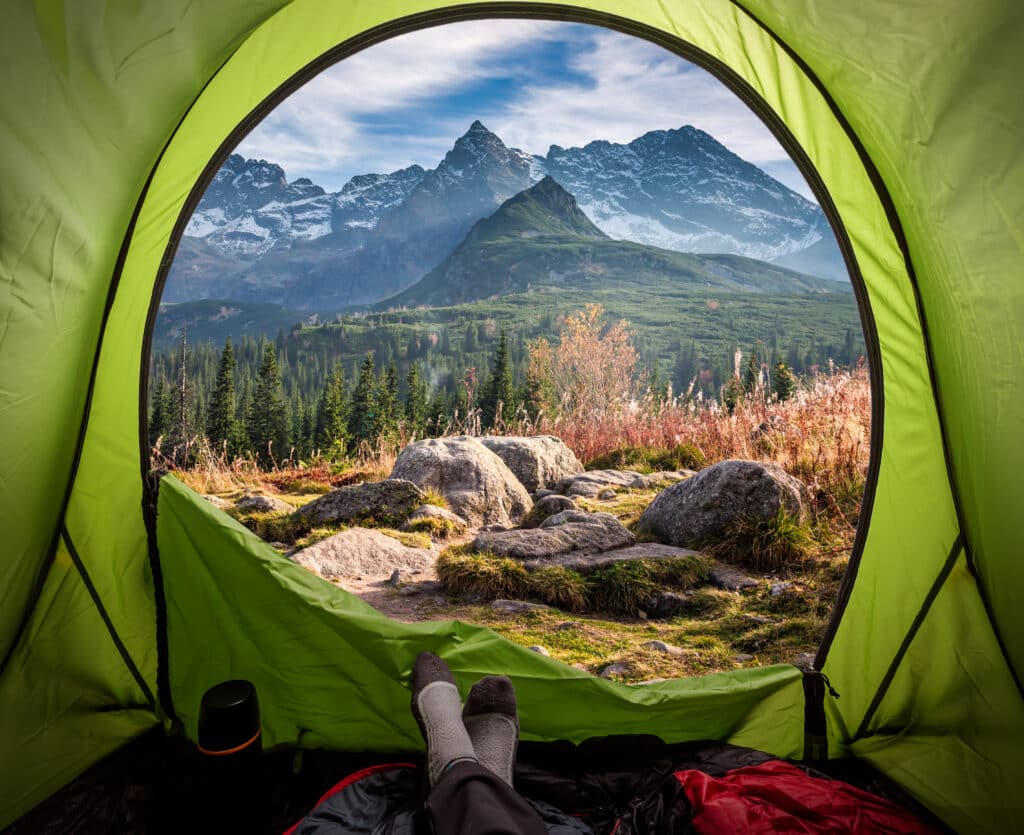
Now that we’ve covered the basics, it’s time to unveil our top picks for backpacking sleeping bags of 2023. Our selections are based on various factors, including packed size and weight, temperature ratings and insulation, mummy vs. rectangular bags, sizing and fit, as well as additional features like ventilation options, water resistance, durability, and ethical and sustainable materials.
No matter your specific needs and preferences, there’s a sleeping bag on this list that’s perfect for you.
Best Overall Sleeping Bag
Feathered Friends Hummingbird UL takes the crown for the best overall sleeping bag. Known for their high-quality and durable products, their sleeping bags are filled with 14 ounces of 900-fill goose down, providing excellent warmth and insulation.
These bags also feature a water-resistant shell, ensuring that you stay dry and comfortable during your backpacking trips. Although Feathered Friends sleeping bags come with a premium price tag, their exceptional performance and durability make them worth the investment.
When comparing Feathered Friends to other top-quality sleeping bags on the market, it’s clear that their bags stand out in terms of insulation, water resistance, and durability. For example, the REI Co-op Magma 15 features an 850-fill down insulation and a 15-denier shell, while Feathered Friends boasts a 900-fill down and a more robust shell.
Feathered Friends sleeping bags are hard to beat in terms of warmth, comfort, and durability. If you need to check out a runner-up sleeping bag, then look no further than the Mountain Hardwear Phantom GORE-TEX 0 Sleeping Bag.
Best Ultralight Sleeping Bag
For those seeking the ultimate lightweight performance, the Sea to Summit Spark is our top pick for the best ultralight sleeping bag. Weighing in at a mere 12 oz and packing down to the size of a 1-liter bottle, the Spark is perfect for warm-weather backpacking trips where every ounce counts. This ultralight sleeping bag features 850-fill-down insulation, providing ample warmth without the added weight.
While the Sea to Summit Spark is an excellent ultralight option, it does have some limitations. Its 10-denier shell is quite delicate, requiring extra care when packing and sleeping outside to avoid damage. Additionally, its minimalistic design means less ventilation and temperature regulation, so it’s better suited for warm-weather trips rather than all-season use.
Despite these limitations, the Spark remains a top choice for backpackers seeking the lightest possible sleeping bag without sacrificing warmth and comfort. However, if these limitations are too much for you, then our runner-up is the Rab Mythic Ultra 360.
Best Budget Sleeping Bag
If you’re looking for a budget-friendly option without compromising on quality, the Kelty Cosmic 20 is our top pick for the best budget sleeping bag. This down sleeping bag offers an ISO Comfort rating of 32F, making it suitable for a wide range of backpacking trips.
The Cosmic 20 has been updated to feature 550 fill-power down, providing reliable insulation without breaking the bank. It weighs under 3 pounds and’s relatively lightweight for a budget option.
When comparing the Kelty Cosmic 20 to other budget sleeping bags and higher-priced alternatives, it’s clear that this bag offers excellent value for its price. While it may not have the premium features of more expensive bags, such as the 850-fill down and 15-denier shell found in the REI Co-op Magma 15, the Kelty Cosmic 20 still provides a reliable and comfortable sleeping experience at a fraction of the cost.
Best Sleeping Bag for Side Sleepers
For side sleepers who often find traditional mummy bags too restrictive, the Nemo Disco 15 is our top pick for the best sleeping bag for side sleepers. This sleeping bag features a unique “spoon” shape, providing extra room at the elbows and knees to accommodate side sleeping comfortably. The Nemo Disco 15 is filled with 650-fill hydrophobic down, ensuring warmth even in damp conditions.
In addition to its innovative shape, the Nemo Disco 15 boasts several other features that make it an excellent choice for side sleepers, such as a built-in pillow sleeve and two zippered “gills” for ventilation. However, the bag weighs 2 pounds and 11 ounces, making it slightly heavier than other options on the market.
Despite this, the Disco 15’s unique design and features make it a top choice for side sleepers seeking a comfortable and warm night’s sleep. But if the Nemo Disco does not do it for you, check out the Big Agnes Sidewinder SL 20 to appease your side sleeping ways.
Best Women’s Specific Sleeping Bag
For those seeking a sleeping bag specifically designed for different body shapes and temperature needs, women’s-specific sleeping bags are an excellent option, regardless of gender identity. Our top pick for the best women’s-specific sleeping bag is the Feathered Friends Egret. This high-quality sleeping bag features 950+ fill power and a Pertex Endurance fabric, providing exceptional warmth and comfort.
The Feathered Friends Egret is designed with more room in the hips and a narrower shoulder area, accommodating a variety of body shapes. While this sleeping bag comes with a premium price tag, its unparalleled comfort, loft, and size options make it well worth the investment.
If you’re in search of a women’s-specific sleeping bag that offers top-notch performance, the Feathered Friends Egret is a clear choice.
And if you are one of those couples needing a double sleeping bag, we’ve got you covered too! Check out the Feathered Friends Spoonbill UL.
Additional Features to Consider

Beyond the core factors of warmth, size, shape, and insulation, there are additional features to consider when selecting the perfect backpacking sleeping bag. These include ventilation options, water resistance and durability, and ethical and sustainable materials.
Considering these features, you can find a sleeping bag that keeps you warm and comfortable and aligns with your values and preferences.
Ventilation Options
Proper ventilation is crucial for a comfortable night’s sleep, as it helps regulate temperature and reduce condensation inside the sleeping bag. Some sleeping bags offer zippered gills, which can be opened to release hot air and provide additional airflow. Other bags feature draft collars or adjustable hoods, which can be tightened or loosened to control the amount of air entering the bag.
When selecting a sleeping bag, it’s essential to consider the ventilation options available and how they align with your personal comfort preferences and the climate of your backpacking destination. A well-ventilated sleeping bag can make all the difference in ensuring a comfortable and restful night’s sleep in the great outdoors.
Water Resistance and Durability
Water resistance and durability are crucial factors to consider when choosing a sleeping bag, as they determine the bag’s ability to withstand the elements and provide lasting performance. Higher denier numbers indicate thicker fabrics, which offer better protection and durability. Many sleeping bags also feature a durable water-repellent coating to help repel moisture and keep you dry during wet conditions.
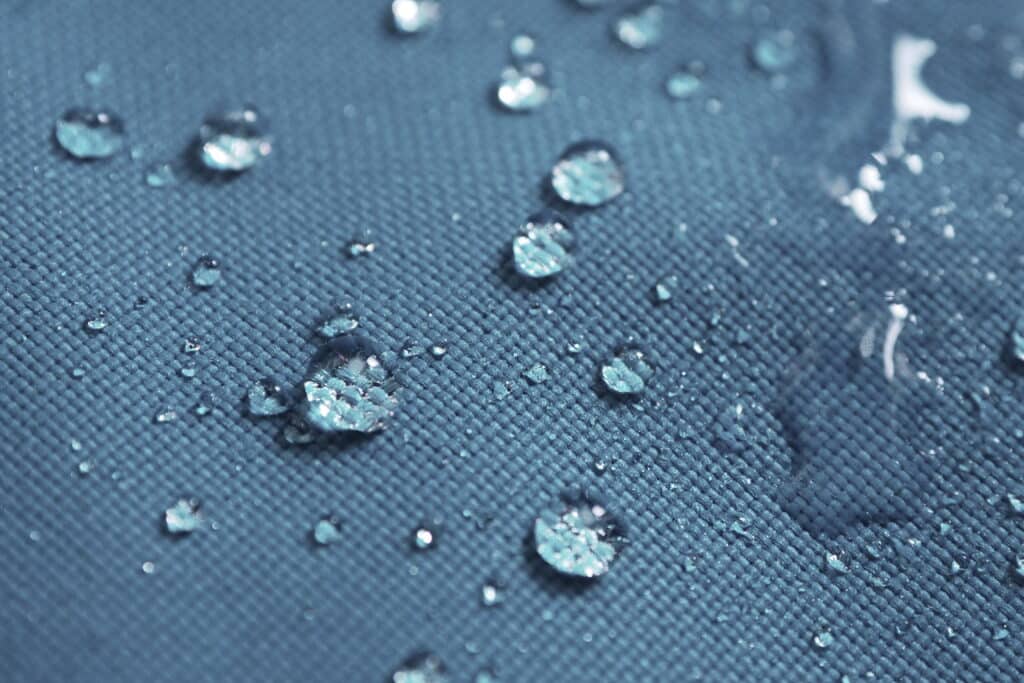
In addition to fabric thickness, it’s important to consider features such as sealed seams and durable zippers when evaluating a sleeping bag’s water resistance and durability. By choosing a bag with these features, you’ll be better equipped to stay dry and comfortable during your backpacking adventures, regardless of the weather.
Ethical and Sustainable Materials
As consumers become increasingly aware of their purchases’ environmental and social impacts, the importance of ethical and sustainable materials in outdoor gear has grown. When choosing a sleeping bag, consider options made from ethically sourced and sustainable materials, such as organic cotton, recycled polyester, or down that is certified humane through the Responsible Down Standard (RDS).
For those seeking a vegan alternative to down, synthetic insulation provides a cruelty-free option that still offers excellent warmth and durability. By choosing a sleeping bag made from ethical and sustainable materials, you can enjoy a comfortable and warm night’s sleep while also supporting responsible manufacturing practices.
Sleeping Bag Accessories
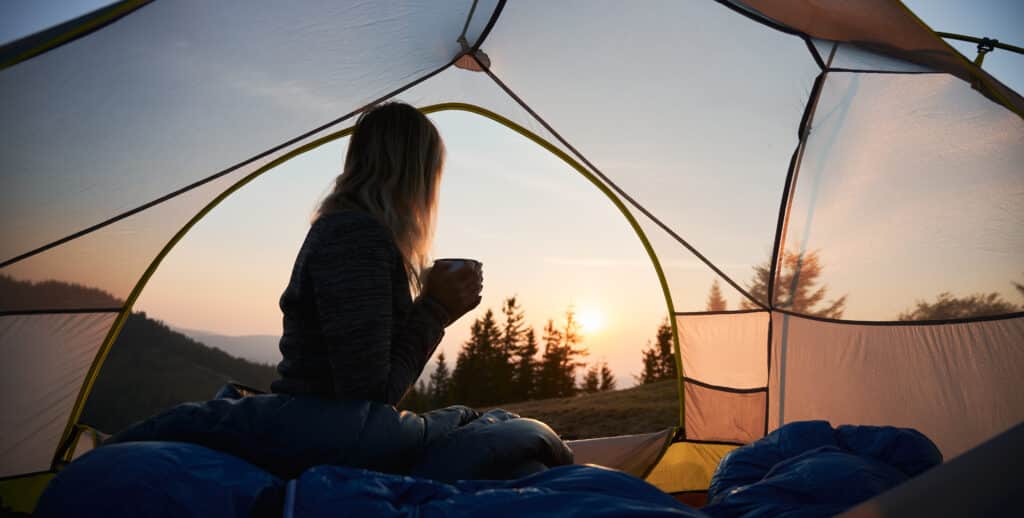
In addition to selecting the perfect sleeping bag, there are several accessories that can enhance your comfort and convenience while backpacking. These include sleeping pads, liners, pillows, and compression and storage sacks. Investing in these accessories can further improve your sleeping bag’s performance and ensure a more enjoyable backpacking experience.
Sleeping Pads
Sleeping pads play a crucial role in providing insulation from the ground and adding warmth to your sleep system. There are two main types of sleeping pads: self-inflating, like the Therm-a-Rest BaseCamp™ Sleeping Pad, and air pads, like the Exped Dura 8R. Self-inflating pads are made of foam and inflate automatically when unrolled, while air pads consist of air-filled chambers and are typically lighter and more compact.
Both types of pads can help increase the comfort and warmth of your sleeping bag, making them an essential accessory for backpacking trips.
Consider factors such as warmth-to-weight ratio, insulation, comfort, and price when choosing a sleeping pad. Pairing your sleeping bag with a high-quality, lightweight sleeping pad can make all the difference in ensuring a comfortable and restful night’s sleep in the backcountry.
Liners and Pillows
Liners and pillows are additional accessories that can increase your sleeping bag’s temperature range and comfort, although they add extra weight to your pack. Liners can be made from a variety of materials and are designed to slip inside your sleeping bag, adding an additional layer of insulation.
For example, the Sea to Summit Thermolite Reactor can add up to 25F to the temperature rating of your sleeping bag. Another option weighing only 7.4 oz, is the Cocoon MummyLiner™ Egyptian Cotton
Pillows, on the other hand, provide additional support and comfort for your head and neck while sleeping. Various backpacking pillows are available, from inflatable options to compressible foam designs. By incorporating liners and pillows into your sleep system, you can further enhance the comfort and versatility of your backpacking sleeping bag.
Compression and Storage Sacks
Compression and storage sacks are essential accessories for protecting your sleeping bag from dirt and moisture and keeping it uncompressed when not in use. Compression sacks are designed to reduce the volume of your sleeping bag, making it easier to pack and carry on your backpacking adventures.
On the other hand, storage sacks are intended for long-term storage and help maintain the loft and insulation of your sleeping bag by keeping it uncompressed.
When selecting a compression or storage sack, look for durable materials and sturdy construction to ensure that your sleeping bag stays protected and maintains its performance over time. Properly storing and protecting your sleeping bag is crucial to prolonging its lifespan and ensuring that it continues to provide warmth and comfort on your backpacking trips.
Caring for Your Backpacking Sleeping Bag
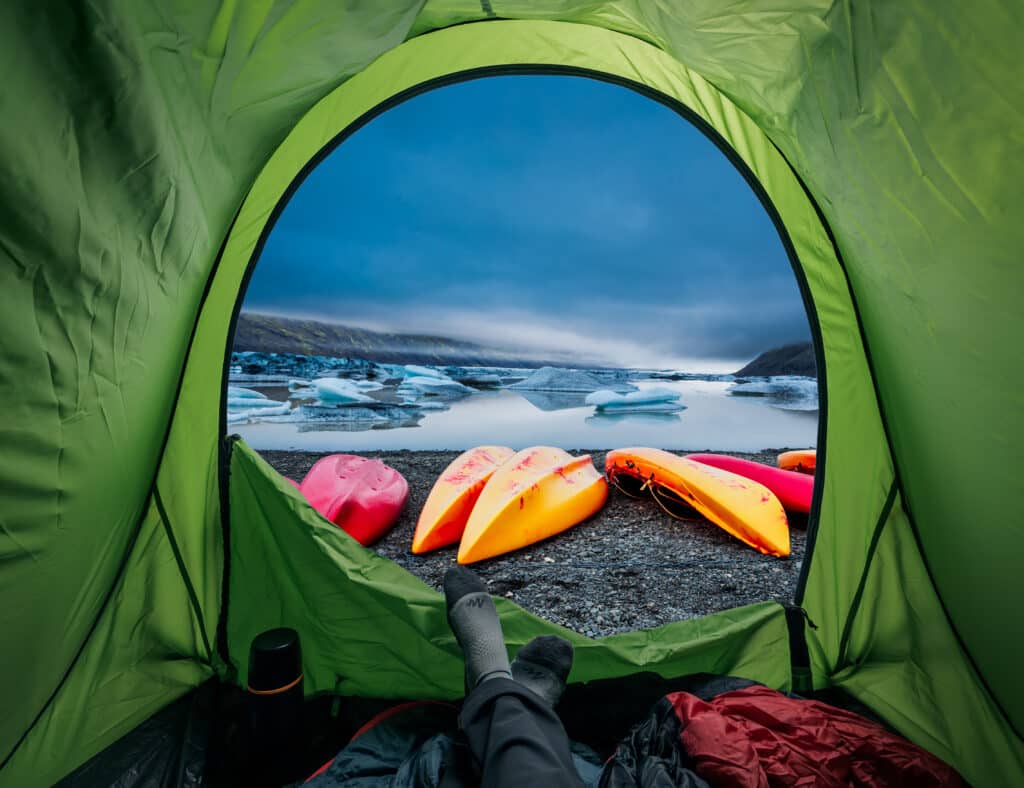
Proper care and maintenance are essential to prolong the life of your backpacking sleeping bag and ensure that it continues to provide warmth and comfort on your adventures.
In the following sections, we’ll discuss washing instructions and storage tips to help you keep your sleeping bag in top condition.
Washing Instructions
Keeping your sleeping bag clean is vital for maintaining its insulation and performance. To wash your sleeping bag, follow these guidelines: use a groundsheet to protect it from dirt and debris, wear clean clothes to prevent transferring dirt onto the bag, wash it in a front-load washing machine with down-specific soap, and dry it on low heat with tennis balls to fluff the down.
Always consult the manufacturer’s instructions for specific washing guidelines, as some materials may require special care. Following these washing instructions can help preserve your sleeping bag’s insulation, water resistance, and durability.
Regular cleaning will also ensure that your sleeping bag remains fresh and comfortable for many backpacking trips to come.
Storage Tips
Proper storage is crucial for maintaining your sleeping bag’s loft and insulation. To store your sleeping bag, first ensure that it is completely dry. Then remove it from its stuff sack and either hang it in a closet to allow for a full loft or store it in a large cotton or mesh bag in a cool, dry place. Avoid compressing your sleeping bag, as this can lead to a loss of loft and insulation over time.
By following these storage tips, you can help prolong the life of your sleeping bag and ensure that it remains warm and comfortable for many backpacking adventures. Proper storage will also protect your sleeping bag from damage, keeping it in top condition for years to come.
Summary
This comprehensive guide covers everything you need to know about backpacking sleeping bags, from temperature ratings and insulation to sizing and fit. We’ve also revealed our top picks for the best backpacking sleeping bag of 2023, including options for various categories such as best overall, ultralight, budget, side sleeper, and women’s specific.
Additionally, we’ve discussed the importance of additional features such as ventilation options, water resistance, durability, ethical and sustainable materials, and care and maintenance tips for your sleeping bag.
With this information in hand, you’re now equipped to find the perfect backpacking sleeping bag for your needs and preferences. Happy trails, and may your nights in the great outdoors be warm, comfortable, and restful!

